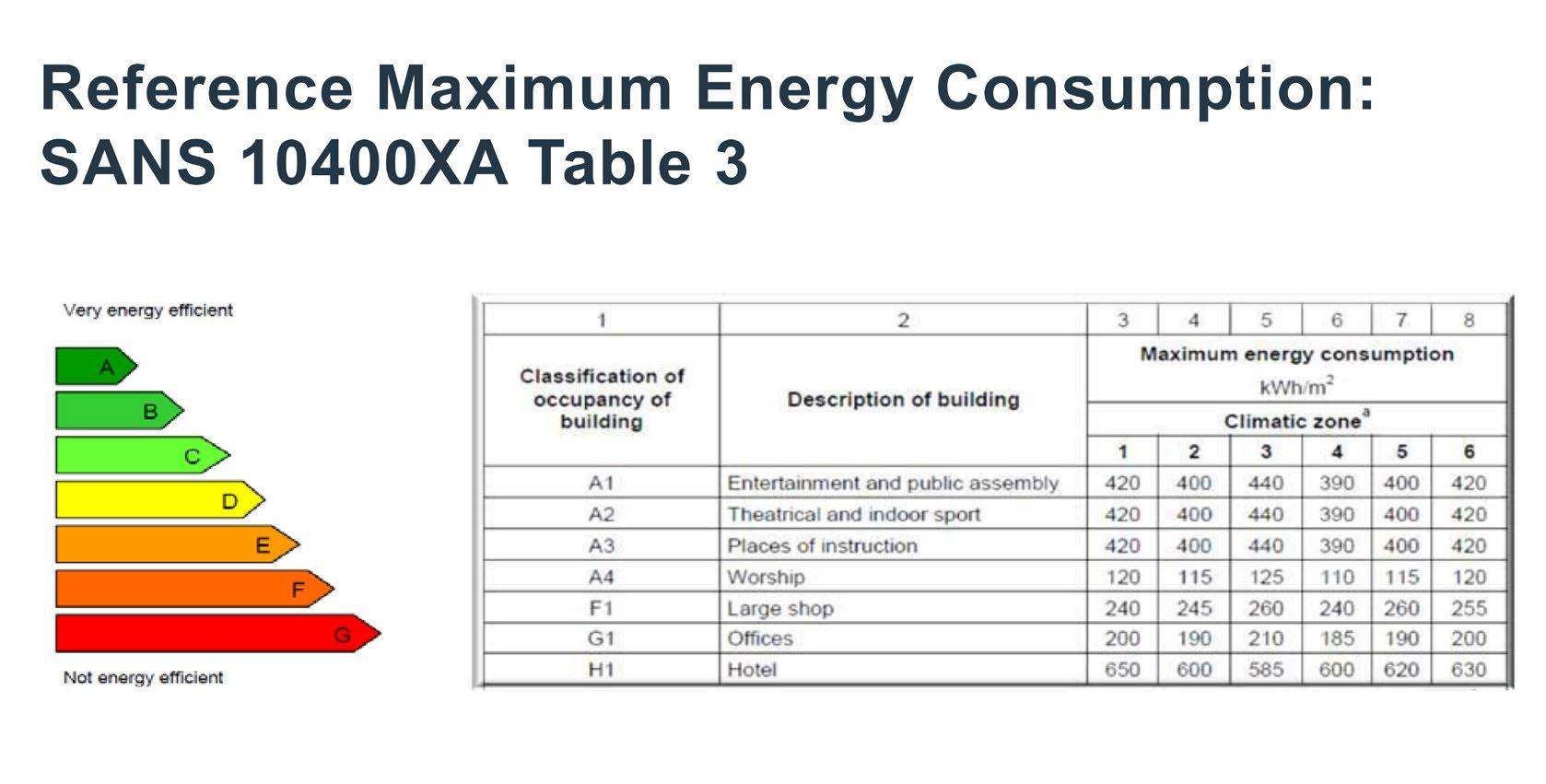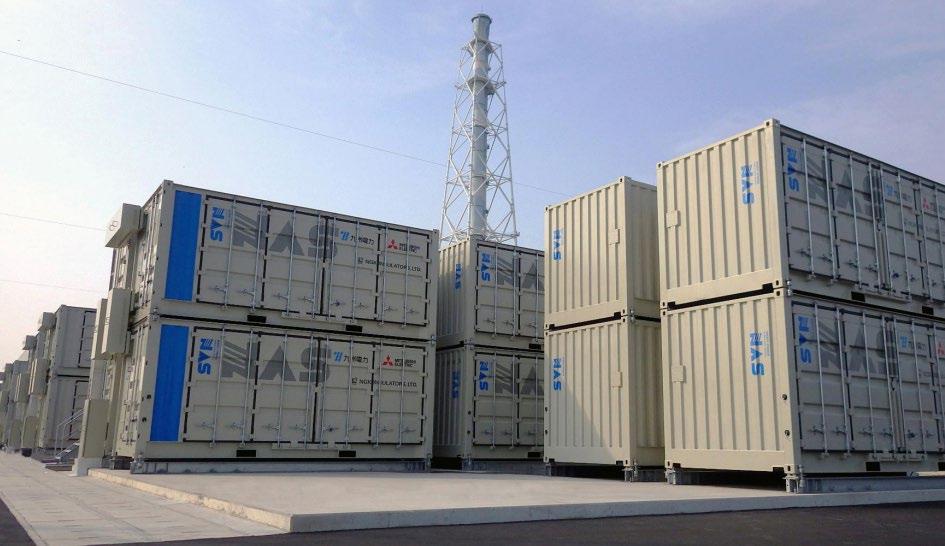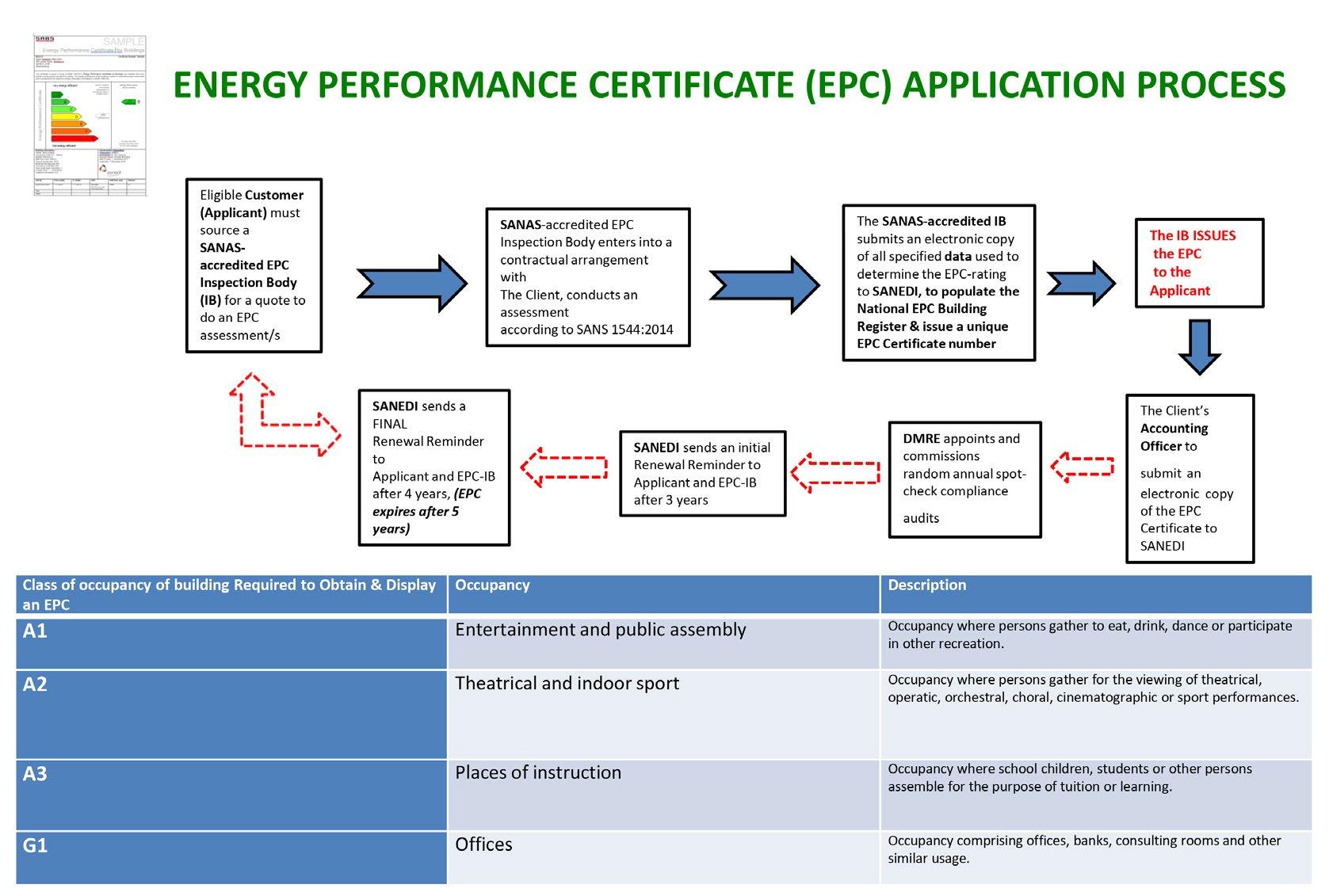
10 minute read
POLICY RAISING THE ENERGY BAR South Africa’s newly implemented Energy Performance Certificate regulations will encourage buildings to become more energy efficient
South Africa’s newly implemented Energy Performance Certificate regulations will aid the journey to a lowcarbon future by encouraging buildings to become more energy efficient.
WORDS Melissa Baird
Advertisement
Raising the Energy Bar
As 2020 closed, the Department of Mineral Resources and Energy (DMRE) gazetted regulations for Energy Performance Certificates (EPCs) that make it compulsory for building owners to display a certificate of the building’s ‘energy performance’ at its entrance. This heralds the start of the monitoring and evaluation of buildings’ energy related data. The South African National Energy Development Institute (SANEDI) is tasked with the management and storage of all the data under the National Building Energy Performance Register and will track progress of the achievement of the goals and targets set out in the EPC regulations. This is in keeping with their mandate under The National Energy Act 2008 (Act 34 of 2008), to promote energy efficiency throughout the economy.
According to the International Energy Agency, buildings account for approximately 30% of global energy consumption and 40% of total direct and indirect CO2 emissions. These figures could easily increase in South Africa due to increasing urbanisation. As pressure increases on the grid it is imperative to prepare for energy security by adopting various efficiency measures and looking into the mix of renewable energy sources.
GBCSA CEO, Lisa Reynolds, explains that implementation of this new policy is “about future proofing and developing energy security. In the long term not only will this lead to cost saving but also to mitigation of risk.”
Most countries in the European Union have been implementing EPCs for over a decade and now all
EPCs rate buildings’ energy performance from A to G, with A being the most energy efficient and G the worst, when benchmarking against the figures in the SANS 10400-XA standard.
categories of buildings have to comply. An example of this is in Paris where all houses for sale must have an EPC before any transactions can take place. It is a bit like considering the fuel consumption of a vehicle before purchasing it – the energy certificate classifies a building’s energy performance, contributing to its sale and rental value.
Building owners are encouraged to consider how the EPCs will enable South Africa to follow through on its commitment at the Paris Accord to address climate change. The EPCs act as a tool that gives clients a snapshot view of their building energy performance. With this knowledge, informed decisions relating to energy efficiency improvements and renewable energy integration can be made for future improvements.
STANDARDS GOVERNING THE EPC
SANS 1544, the Energy Performance Certificate standard, outlines the methodology by which energy performance is measured for existing buildings and takes into account unoccupied floor areas/vacancies and mixed-use buildings. It is important to note that the non-use of energy does not count as energy efficiency for unoccupied buildings. The standard maps out all the data of the building that needs to be collected to enable it to be audited by an independent third party. The independent inspection bodies (third parties) must be South African National Accreditation System (SANAS) accredited. The regulation is indirectly a source of job creation as more and more of these inspection bodies are formed.
It has been a journey over the past 15 years to get to finalisation of the regulation for the EPCs. The standard was published in 2014 and is likely to undergo revisions as new learnings are incorporated.
According to Reynolds there are laws and standards that cover new buildings, but there is a huge existing stock of buildings that were built before energy performance considerations. The challenge is figuring out how to push existing building stock towards energy efficiency.

Large Capacity Energy Storage
NGK’s Sodium Sulphur (NaS) Utility Battery is quite simply the best choice worldwide for large-capacity energy storage.
NAS batteries are large-capacity 6-hour energy batteries with multiple power grid applications.
Superior safety, function and performance made possible by decades of data monitoring from multiple operational installations across the world.
• Long life • Ultra-deep cycle • Hot location resilient • Super-efficient • Low maintenance • 3rd party tested and certified by Rhineland,
Germany • Manufacturer’s guarantee
Manufactured by NGK Japan using cutting edge ceramic manufacturing techniques, in partnership with BASF Germany.
In excess of 17 years of proven commercial operation.
APPLICATIONS


GRID SOLUTIONS
Peak Demand Management / Capacity Investment deferral
RENEWABLES
Renewables / Power plants
CONSUMERS
Industrial / Commercial & residential

MICROGRIDS
Islands / Remote grids and microgrids
info@altum.energy www.altum.energy
THE EPC JOURNEY: 2005-2030
SANEDI

The first step is to understand what the building’s energy performance is at present. Akin to the car analogy, you may buy a huge gas-guzzler or a tiny fuelefficient run-around, but you know its fuel-efficiency upfront. Potential tenants and owners of buildings need to know the energy performance of a building so that they can shop around for one that they know will meet their energy efficiency needs.
The first EPCs aim to gather a snapshot view of the current energy performance. If a building gets an F rating there is a five-year EPC validity period for efficiency interventions to be installed and bring it to a D rating.
By knowing how much energy your building uses and its performance in comparison to other buildings, you are far better prepared to make the necessary improvements. It is vital to collect and understand the data because “what is not measured cannot be managed”.
HOW THE EPC PROCESS WORKS
EPCsratebuildings’energyperformancefromAtoG,withAbeingthemostenergyefficientandGtheworst,when benchmarking against the figures in the SANS 10400-XA standard.
Theenergyconsumptionmeasurementsarebasedonthedatafromutilitybillsormetersthataregatheredinthe yearpriortotheassessmentperiod.TheEPCsunitofmeasureiskWh(kilowatthours)persquaremetreperannum. Once collected, calculated and put into the format for the EPC, the building owner contracts a SANAS registered accredited inspection body to conduct the audit of this information.
Oncetheauditiscomplete,theaccreditedbodysubmitsthedatatoSANEDIwhichinputsitintotheBuildingEnergy PerformanceRegister.ThisinformationgeneratesauniquenumberfortheEPCwhichisthenissuedtotheSANAS accredited inspection body who issues the EPC to the client so it can be displayed. A copy of it is sent to SANEDI to keep track of the data on the national register.
EPCs are valid for five years and SANEDI will send renewal reminders at three years. The final reminder is sent one year before the expiration of the certificate.
The regulations apply to non-residential buildings (specific occupancy classes) with a net floor area of at least 2000m2intheprivatesector,and1000m2forbuildingsowned,operatedoroccupiedbyanorganofstate.Schools, universities and colleges, places of indoor entertainment and sport, offices, places of public assembly, and indoor sports all have to comply.
Although retail and residential buildings are excluded for now, building owners are encouraged to begin the process as part of their voluntary journey towards contributing to the nation’s overall energy efficiency.

SANEDI
THE ROLE OF SANAS IN REGISTERING EPC CONTRACTORS – THE RUBBER STAMP NEEDED
SANAS is part of the technical infrastructure of the Department of Trade and Industry and Competition. All entities wishing to be inspection bodies and conduct EPCs have to register with SANAS to be accredited as an EPC Inspection Body. Part of the SANAS accreditation process is establishing the EPC competency within the potential inspection body, and they will check that people doing EPCs have the relevant knowledge and skills required.
There will be lessons learnt while implementing SANS 1544 and these lessons will inform the next version of the standard. GBCSA and SANEDI will be part of the process to continue to improve on this standard and will contribute to its next draft. The new version should be completed within the next two years. The EPCs act as a tool that gives clients a snapshot view of their building energy performance. With this knowledge, informed decisions relating to energy efficiency improvements and renewable energy integration can be made for future improvements.

GBCSA CEO, Lisa Reynolds was the chair of the working group that wrote the standard and had significant input into the development of the EPCs. Reynolds explains that it is a process of making energy efficiency tangible, which is why these benchmarking exercises are so important.
The data collected for two of the GBCSA’s Green Star ratings for buildings can contribute to the information needed for the EPC requirements: The Energy and Water Performance tool for offices and for Existing Building Performance. Collection of this data is useful for the EPC and can help map future energy efficiency requirements.
It is important to remember that this is not a voluntary exercise. Penalties will be applied for non-compliance, the exact details of which are yet to be disclosed. The implementation of the EPC regulation and the subsequent retrofitting of buildings toward energy efficiency will lead to job creation. Furthermore, it will help make South Africa more energy efficient and reduce its carbon per capita which is one of the highest in the world.
DEADLINES FOR COMPLIANCE
Propertyownersandgovernmententitieshaveuntil 7December2022toensurethattheirbuildingsadhere to the regulations.
SA’S FIRST ENERGY PERFORMANCE CERTIFICATE
On18February2021,theAdminBbuildingatStellenboschUniversity,whichhousesthevicechancellorandexecutive team, received the first-ever EPC for a building in South Africa.
Bluedust Engineering Solutions, Stellenbosch University’s energy management consultants, were instrumental in achieving their EPC.
The EPC was issued by Energy Management and Verification Services (EMVS), who is the first inspection body accredited by SANAS to assess and issue an EPC rating for eligible South African buildings.
BarryBredenkamp,SANEDI’sgeneralmanagerforenergyefficiencyandcorporatecommunications,commented: “Stellenbosch University being awarded an A-rated EPC so soon after the regulations were gazetted, really is a phenomenal achievement and they should be applauded for this major step forward.”

Stefan Els
Bluedust Engineering Solutions provides expertise in various technical engineering backgrounds with a passion for excellence and sustainability.
LET US HELP YOU

bluedustEPC
Energy Performance Certificates
Having more than 10 years’ experience in energy management, saving energy for large industrial and commercial customers as part of the Eskom EEDSM program, Bluedust’s engineers are perfectly suited to assist clients with their EPC applications.
•It's part of global best-practice for building energy consumption.
WHY APPLY FOR AN EPC?
•To understand your building's energy profile. •To improve energy efficiency and achieving cost savings. •It’s mandatory in South Africa, and forms part of a responsible
building owner's duties.
Eskom will increase electricity tariffs by 15%, starting in April 2021. As such, Bluedust can help clients to use the mandatory EPC process for buildings as a catalyst for smart energy management, efficiency and cost savings. With partners like HFX systems, who have more than 30 years' expereince in the electronic and telecoms industry, Bluedust can implement fully integrated energy management systems for any client. After the EPC has been awarded, it can be followed by detailed energy audits and energy management system gap analyses, which inform the implementation of smart energy monitoring, management and reporting solutions, finally, allowing for clients to implement savings initiatives and apply for 12L energy savings tax incentives.
systems
Dr Frank Duvenhage
PHONE
+27 062 380 1052 Dr Janco Vermeulen
PHONE
+27 071 610 1504 Adiel Jakoef


PHONE
+27 72 209 1548
epc@emvs.co.za www.emvs.co.za SANAS ACCREDITED INSPECTION BODY
ENERGY PERFORMANCE CERTIFICATES FOR BUILDINGS
Energy Management Validation Services (EMVS) offers a range of professional services in the field of Measurement and Verification and Energy Management, for the last 9 years. These services are offered by engineers with Certified Measurement and Verification Professional (CMVP©) and Certified Energy Management (CEM©) qualifications.
EMVS performs professional Measurement and Verification (M&V) of the impacts of Energy Management interventions, including Baseline characterisation, Post-implementation monitoring and Performance Assessment.
EMVS is a SANAS Accredited Inspection Body (Type A), with field of inspection for Measurement and Verification of Energy Savings. This allows EMVS to perform the Measurement and Verification (M&V) of 12-L tax incentives on Energy Efficiency projects.
EMVS offers services for the issuing of Energy Performance Certificates (EPCs) for buildings. EPCs are issued in accordance with the SANS 1544 and SANS 10400-XA standards. EMVS is a
SANAS Accredited Inspection Body (Type A), with field of inspection for Energy Performance Certificates for Buildings. This allows EMVS to issue EPCs for
compliance to the Regulations for the Mandatory Display and Submission of Energy Performance Certificates for Buildings.







